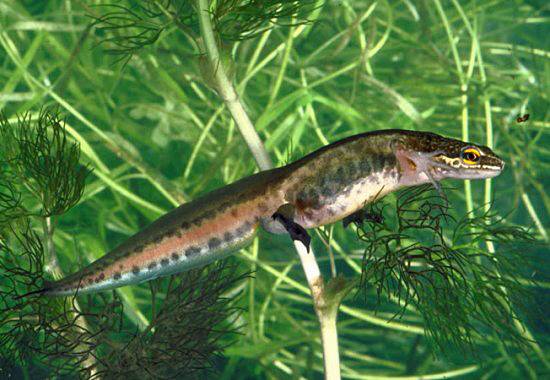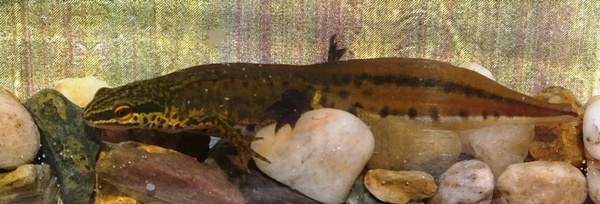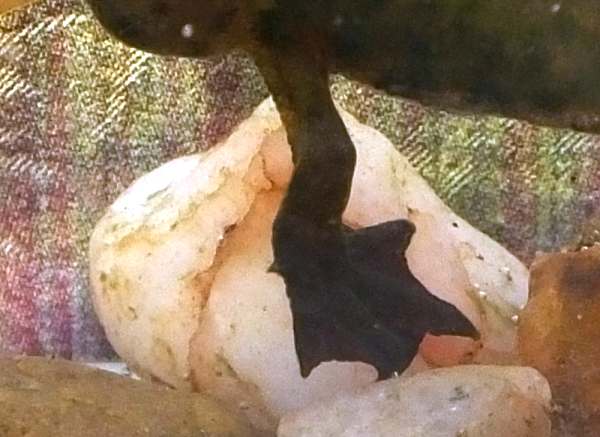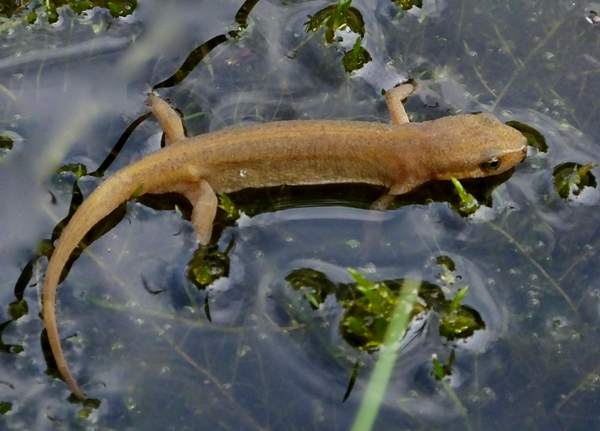Lissotriton helveticus - Palmate Newt
Phylum: Chordata - Class: Amphibia - Order: Caudata - Family: Salamandridae
Identification - Distribution - Lifecycle - Food - Predators - Reference Sources

Picture courtesy of the Countryside Council for Wales
This little amphibian is tolerant of acid waters and so it is the most common newt species on heath and moorland, where it breeds in shallow ponds and other small waterholes in the springtime.

Identification
This is the smallest of the three newt species found in the wild in Britain. (At 6cm in length when fully mature, it is slightly smaller than the Common Newt.) Note the skin between the toes of the Palmate Newt - the webbed rear feet are rather like palms of the hand, from which this amphibian gets its common name. Our garden in West Wales is in an acid soil area, and when we built our garden pond it was not long before Palmate Newts moved in. Creating a garden pond is a great way of helping to restore our populations of amphibians, including newts. See our illustrated guide to Making a Garden Pond...

Above: The webbed rear foot of a mature Palmate Newt
The throat is unspotted, which helps distinguish the Palmate Newt from the Common Newt whose throat is patterned with black spots.
Distribution
Palmate Newts are reasonably common in Britain, although they are not as plentiful as the Common Newt (Lissotriton vulgaris). If you live in an acid soil area and you have a garden pond with shallow, weed-fringed margins, there is a very good chance that this species will move in from the surrounding countryside.
Food
Once they leave the water towards the end of July they feed on worms and other invertebrates, although they do also capture flying insects that have alighted on the waterside vegetation.

Above: Walking on water? Not quite! This young Palmate Newt is hunting for insects above the surface of a pond, relying on subsurface mosses and other aquatic vegetation for support.
Predators
Palmate Newts are eaten by many kinds of animals including Grass Snakes as well as Grey Herons and other water birds.
Lifecycle
Palmate Newts hybernate emerge from hibernation in March, and they breed soon afterwards. Towards the end of September, Palmate Newts find dense leaf litter and there they hibernate until the following spring. Apparently able to cope fairly well in dry conditions, Palmate Newts sometimes wander a long way away from any ponds or streams. In contrast, Common Newts tend to turn up nearly always in fairly damp locations.
Reference Sources
Matching the Hatch by Pat O'Reilly (2017) - learn all about aquatic insects and other small water creatures that feature in the diet of newts.